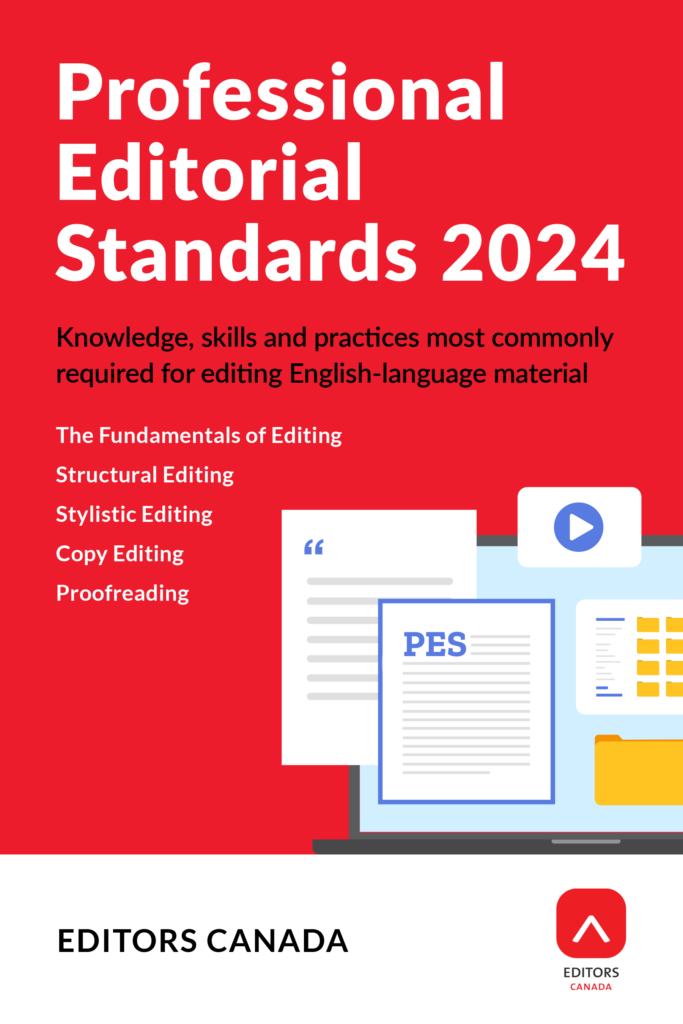Structural editing is assessing and shaping the overall organization and content of the material to optimize it for the intended audience, medium and purpose.
Structural editing is also known as substantive editing. Structural editing (possibly with stylistic editing) is sometimes called manuscript editing or content editing.
A professional structural editor meets the Standards in Part A: The Fundamentals of Editing and meets the following Standards.
B1 Organization
B1.1 Reorganize material to achieve a coherent structure and sequence, a logical progression of ideas and a narrative or expository flow, and a shape appropriate to the audience, medium and purpose.
Keep in mind that the medium often determines organization (e.g., the inverted pyramid structure of a news story, the chapter arrangement of a book, the navigational structure of a website). If necessary and possible, create a new outline or site map and follow it or recommend it be followed.
B1.2 Recommend headings and navigation aids to clarify or highlight the organization of the material.
B1.3 Recommend the most effective positioning of ancillary textual material (e.g., sidebars, pull quotes, appendices, notes).
B1.4 Indicate the most effective positioning of all visual elements.
B1.5 Revise, cut or expand text, or suggest changes to meet length requirements.
B2 Content
The following Standards are related to content issues. Structural editors should follow them where relevant.
B2.1 Determine what content is suitable and optimal given the audience, medium and purpose. Identify and either recommend or make appropriate deletions (e.g., to remove repetitive, irrelevant or otherwise superfluous text or other elements) and additions (e.g., to fill gaps in content or strengthen transitions between sections) in both text and visual elements to make the entirety of the material suitable and optimal.
B2.2 Recognize and either query or resolve instances of questionable accuracy (e.g., anachronisms in fiction), inadequate research, imbalanced content and lack of focus.
B2.3 Recognize and recast text that would be better presented in another form (e.g., number-laden text as a table, text as a diagram or infographic, a long run-in series of points as a vertical list, a lengthy digression as an appendix).
B2.4 Select, create or secure appropriate visual elements (e.g., images, video, figures) in keeping with the requirements and constraints of the material (e.g., budget, schedule, format, medium). Determine the appropriate content of captions and titles.
B2.5 Identify, create or suggest appropriate supplementary and reference material (e.g., glossaries, endnotes, links).
B2.6 Prepare or secure accurate and complete supplemental material (e.g., audio and video, pop-ups, mastheads, front and back matter).
B2.7 Determine whether any permissions are necessary (e.g., for quotations, visual elements, audio). Flag these copyright and permissions issues or bring the matter to the attention of the appropriate person; document all related efforts.
B2.8 Detect and flag any suspected occurrences of plagiarism. Discuss your concerns with the most appropriate party. If not rectified at this stage, escalate if possible, and document all related efforts.
B3 Structural editing in plain language
B3.1 When applying plain language principles in structural editing, do the following:
- Ensure that the document has the content that the readers need.
- Check that the content of the document is structured so that related information is together and ordered in a way that makes sense for the readers.
- Guide the readers to find information easily through such navigational aids as headings and heading levels, a table of contents, and bulleted or numbered lists.
- Make sure readers can locate, understand and act on information.
- Consider when to use illustrations or media other than text.
Professional Editorial Standards 2024 contents

Introduction
A. The Fundamentals of Editing
B. Standards for Structural Editing
C. Standards for Stylistic Editing
D. Standards for Copy Editing
E. Standards for Proofreading
Appendix
Download Professional Editorial Standards 2024
Looking for the previous edition?
Download Professional Editorial Standards 2016 (PDF).